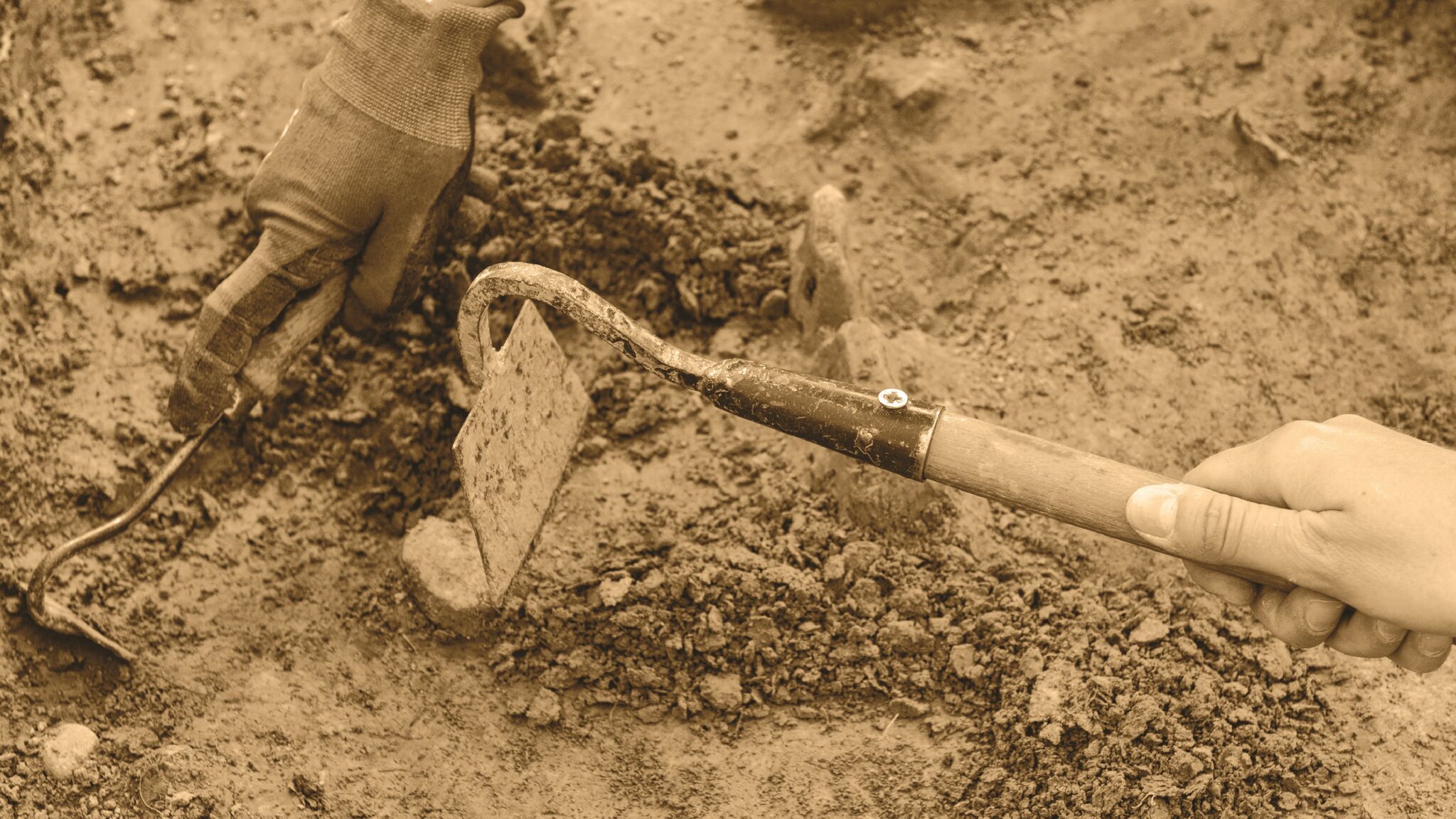1. Found: Biblical Ziklag
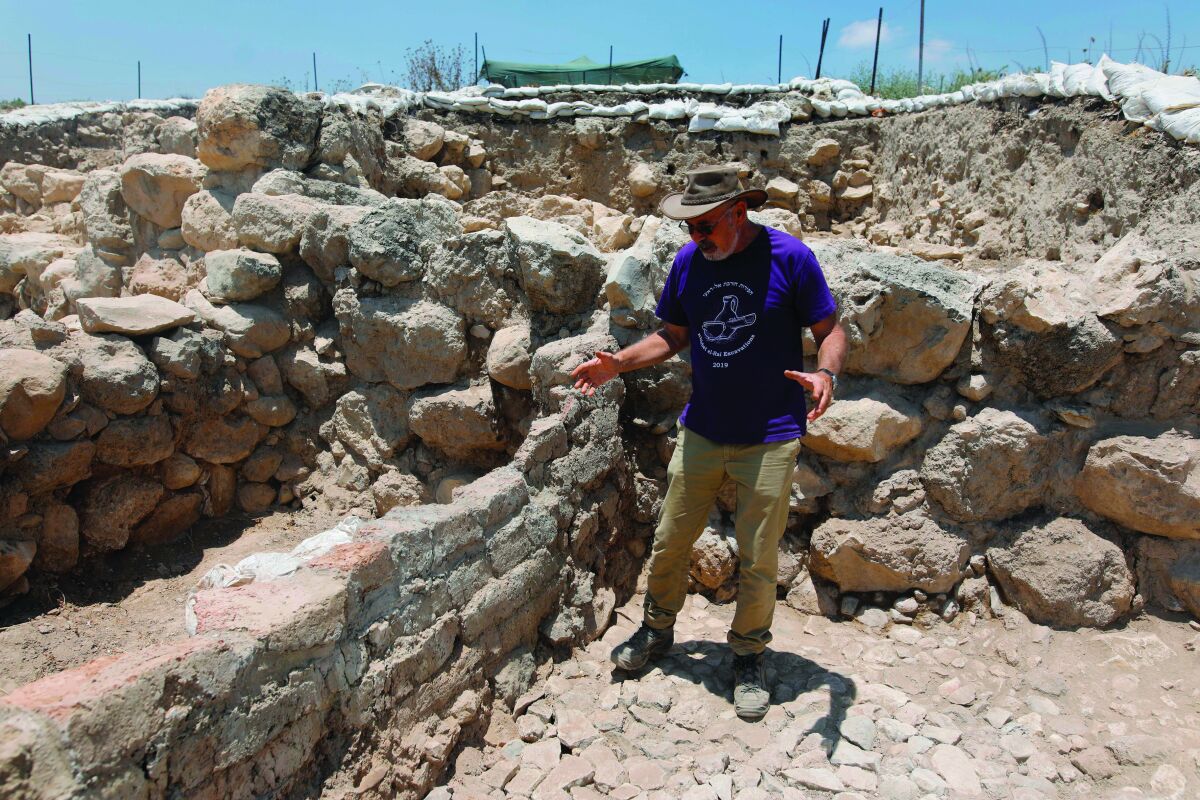
“We have found biblical Ziklag.” That was the bold declaration made in a July press release by the Khirbet a-Ra’i excavation team led by Prof. Yosef Garfinkel. It came after extensive work at the site, located halfway between Jerusalem and Tel Aviv. The elusive biblical city has an unusual story: Originally belonging to the Philistines, it was gifted to David and his men by the king of Gath, while they were on the run from King Saul (1 Samuel 27:5-6).
The excavation furnished substantial evidence of Philistine settlement of the city from the 12th to
11th centuries b.c.e. However, remains found in layers dating to the turn of the 10th century b.c.e. show that by then it had become a Judahite settlement, closely paralleling the remains found at another Davidic site, Khirbet Qeiyafa. No transitional evidence of conflict or destruction was discovered, indicating that Ziklag
changed hands peaceably.
Further, a later burn layer appears to match the biblical account: While David and his men were out on an expedition, the Amalekites entered Ziklag and “burned it with fire” (1 Samuel 30:1), taking the women and children captive. David and his men quickly routed the invaders and reclaimed their families and possessions.
While it is impossible to state absolutely that Khirbet a-Ra’i is biblical Ziklag, the city most importantly attests to the growing evidence of early, significant Israelite cities dating to the reign of King David. The city joins Khirbet Qeiyafa, Tel ‘Eton, Timna, Tel Dan, Geshur, the City of David and others across Israel in dispelling the theory that David was a petty tribal chieftain over a hilltop village.
2. Biblical Bullae
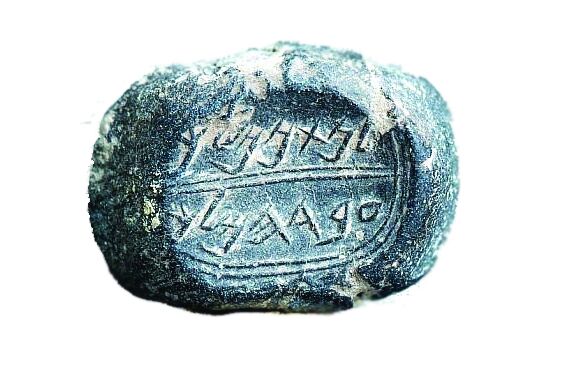
Three bullae (clay seal impressions) of note were discovered in Jerusalem last year: two in the City of David Givati Arch, all dating to the 7th-century b.c.e.
Among the City of David bullae found on the ancient royal acropolis, one is of particular note. Its inscription reads: “Belonging to Nathan-Melech, Servant of the King.” This man is identified in 2 Kings 23:11 as an officer in King Josiah’s royal court; he occupied a chamber near the temple entrance. The bulla matches the biblical figure in name, royal position, dating and find-spot, thus confirming his existence.
The second City of David bulla was inscribed with the name “Ikar, son of Mattaniah.” Mattaniah is a common biblical name (used 16 times), and was also the original name of Zedekiah before he became king over Judah. Whether or not this bulla refers to King Zedekiah and thus belongs to one of his sons is unclear, but the discovery at least corroborates the use of the name in the Bible.
The final bulla, unearthed near the Temple Mount, reads “Belonging to Adonijah the Royal Steward.” Three biblical individuals are named Adonijah, and although this does not relate to any of them, it again corroborates the use of the name. The title royal steward (literally, “over the house”) is also a common biblical term, believed to be the highest-ranking ministerial position beneath the king.
3. Kingdom of Edom
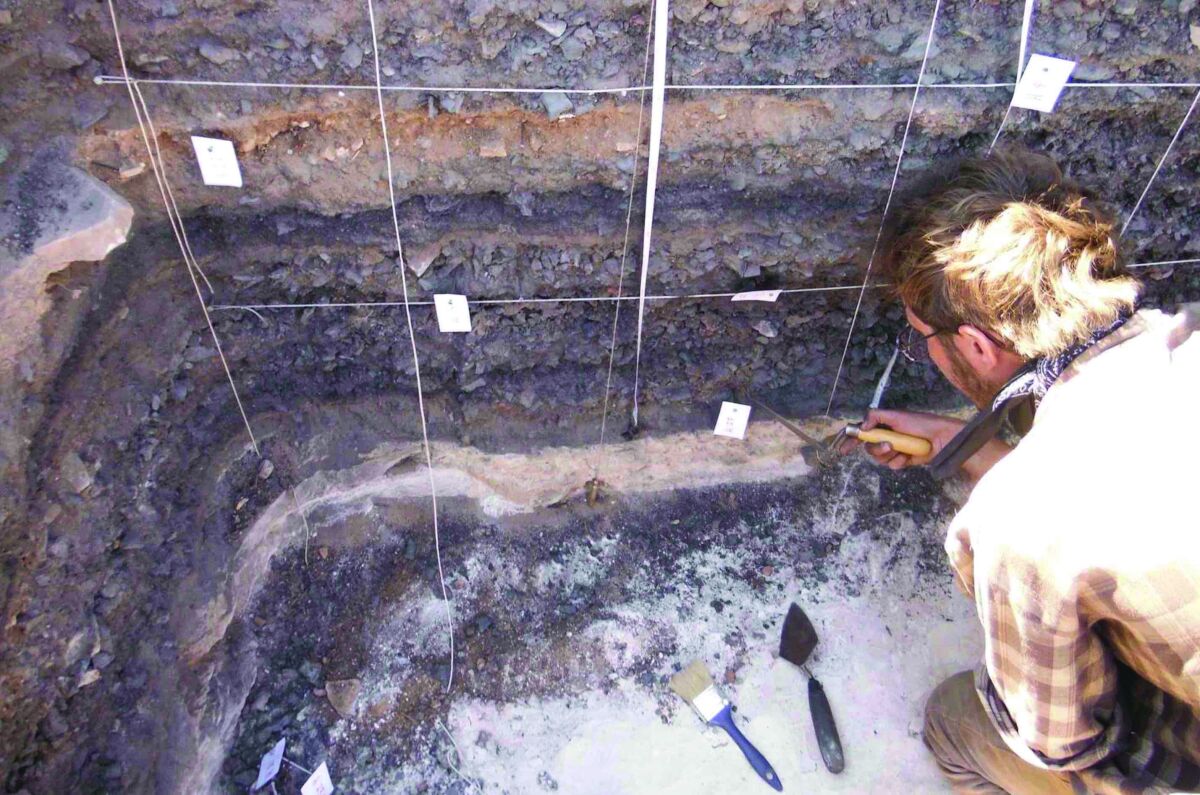
In September, two ancient copper mines just south of the Dead Sea put to rest a debate over the kingdom of Edom. Analysis of slag, a mining byproduct, showed that these Edomite mines in Timna and Faynan were in operation from at least 1100 b.c.e. and probably earlier, and that they were operated by a functioning state with a centralized authority.
The Bible states explicitly that the kingdom of Edom was formed long before the kingdom of Israel (Genesis 36:31). However, Bible skeptics argued that Edom’s kingdom was formed centuries later. Scientific analysis now shows that both mines were operating at least 200 years before Israel became a nation. Evidence shows they were initially run by Egypt, which withdrew from the region during the 12th-century Bronze Age Collapse, leaving control to the native Edomites. Haaretz’s Ariel David commented that this biblical corroboration was “unexpected.”
Analysis of the slag deposit layers shows that the Edomites used different processing techniques than the Egyptians did, and that these new techniques were implemented at both Timna and Faynan, suggesting that a centralized authority controlled both mines. Further evidence shows that building styles, clothing and diet changed around 1000 b.c.e. and that copper production peaked at this time. This matches 2 Samuel 8:14, which states that King David conquered the land of Edom in the 10th-century b.c.e. Israel also imported vast quantities of bronze (an alloy of copper) at this time to build the first temple (1 Chronicles 22, 29).
4. Philistine Genes

In July, a groundbreaking article published in the journal Science Advances revealed dna evidence of the origins of the biblical Philistines. Scientists and historians have long speculated about the origin of these peoples, positing that the Philistines originated in the Levant or perhaps were the “sea peoples” described in ancient Egyptian records. The Bible states that the Philistines came, in large part, from Caphtor, a land generally identified as the Mediterranean island of Crete, just south of Greece (Jeremiah 47:4; Amos 9:7).
Excavations at the major Philistine city of Ashkelon over the past several years have yielded the first-discovered Philistine cemetery, and scientists have since conducted a full formal dna analysis of the Philistines. The Philistine bodies, dating to the 13th-century b.c.e., were identified in the Science Advances article using the genetic labeling “Bronze Age Crete_Odigitria_BA.” Dr. Daniel M. Master, who led the Ashkelon excavation and participated in the study, told the Times of Israel that the study clearly showed “better matches from Crete.”
This major report received plenty of attention in the global press, yet few noted the obvious and exciting fact that dna evidence indicated that the Philistines, at least in part, originated from Crete, thereby proving true the biblical record.
5. Goliath-Era Gath
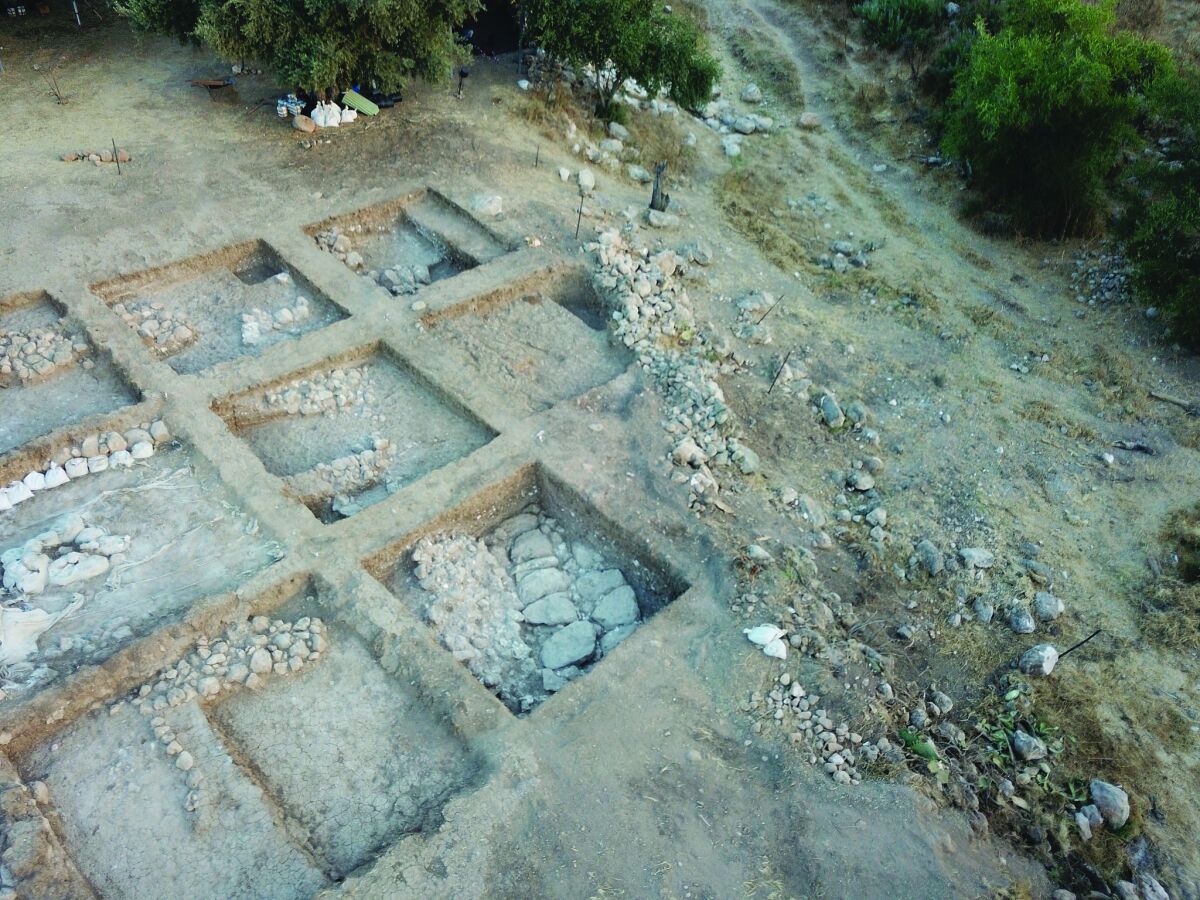
Since 1997, Tel es-Safi, a site identified as the biblical Philistine capital city of Gath, has been excavated every year. During last summer’s dig, archaeologists exposed a city of enormous size, significantly larger than the city that was later built on top of its ruins. The lead excavator, Prof. Aren Maeir of Bar-Ilan University, told Haaretz on July 24, 2019, “I’ve been digging here for 23 years, and this place still manages to surprise me. All along we had this older, giant city that was hiding just a meter under the city we
were digging.”
Professor Maeir and his team dated this new layer to the Iron i period, the time of King Saul and a young David. In other words, these archaeologists were standing in the hometown of the infamous biblical Philistine giant, Goliath of Gath. This was the Gath where the ark of the covenant was taken; the Gath that David entered while on the run from King Saul.
The ruins are consistent with 1 Samuel 10-13, which label Gath as one of the Philistines’ greatest cities. The walls of Iron Age i Gath were more than four meters thick, with individual stones as long as two meters, and bricks being oven-fired rather than only sun-baked.
6. Moabite Altar Inscription
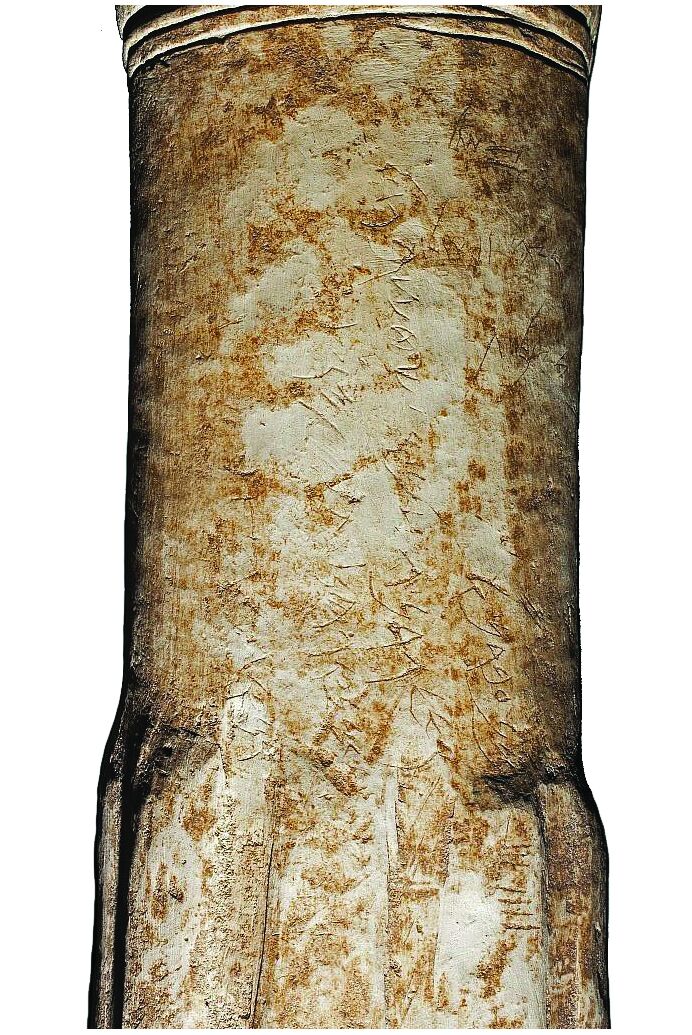
A Moabite stone altar, dating to the late ninth-to-early eighth century b.c.e., was discovered in 2010 at the Jordanian site of Khirbet Ataruz (biblical Ataroth). But it was not until 2019 that the two inscriptions on the altar were translated. The translation provides evidence of an early Moabite nation, a developing, independent Moabite script, evidence of the nation’s cultic practices, and what epigraphers have identified as (possibly) the earliest reference to “Hebrews.”
The Bible, as well as the famous Mesha Stele, records that Hebrews (Israelites) of the tribe of Gad occupied the former Moabite stronghold of Ataroth. 2 Kings 3 describes a rebellion by the Moabite King Mesha in which, according to the Mesha Stele, he retook Ataroth. The Moabite altar inscription describes the defeat of an army, the taking of plunder from “Hebrews,” and its apparent dedication to a cultic temple. Evidence from the site, the Mesha Stele and the biblical account suggest that this pagan temple was, in fact, an Israelite “high place,” and that this very altar stand was perhaps an Israelite one, inscribed secondarily in Moabite script
(1 Kings 22:44).
If this altar does use the term “Hebrews,” it is the earliest-known inscription to do so, excepting the 14th-century b.c.e. use of the term Habiru in the Amarna letters (see pages 25-27).
7. Tel Shiloh Altar Horns

Continuing excavations at the biblical tabernacle site of Tel Shiloh have revealed three stone “altar horns.” These horns are characteristically Israelite: In the Bible, God commands that altars be constructed with these cornerstones, which contained special significance and are mentioned in commands concerning offering sacrifices (Exodus 27:2) and manslaughter inquiries (Exodus 21:14).
While the stone altar horns were discovered outside of their original context, they were all discovered in the vicinity of a monumental Iron Age i building, oriented east-west (a direction suggesting religious significance). Further, they were discovered in the same area as a ritually significant ivory pomegranate (pomegranates are mentioned in the Bible in connection with the temple and tabernacle). This evidence indicates that the altar horns relate to altar use during the Iron Age i period of the tabernacle.
8. Tel et-Tell Tells of Geshur
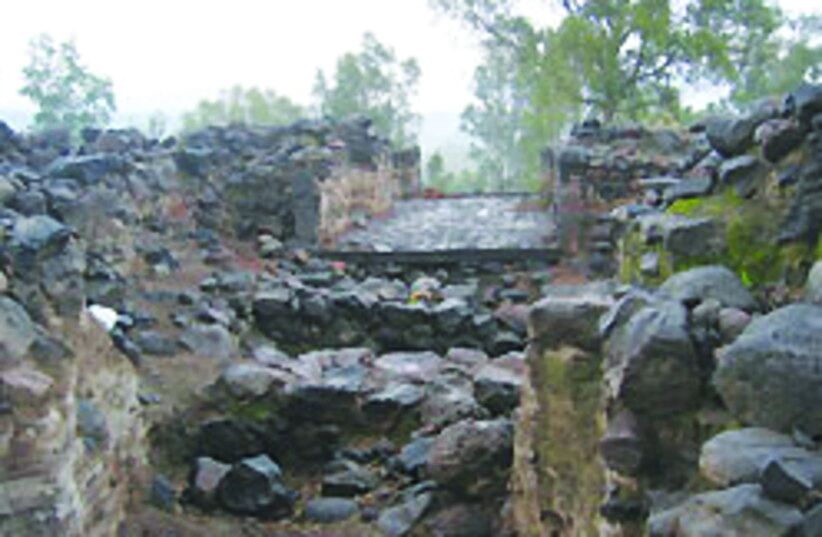
In 2019, excavators at Tel et-Tell discovered one of the largest gatehouses in northern Israel (preserved to a height of 3 meters), in use during the reign of King David. At this time, the site is believed to have been the capital city of the Geshurite tribe. King David is recorded as having raided Geshur, and later married the daughter of the Geshurite king, leading to speculation that such a marital “transaction” may have been arranged—as was typical—within this city gatehouse.
This city is identified in later history as Bethsaida, mentioned numerous times in the New Testament as a significant Roman-period city (and the site of the miracle of the “loaves and fishes”). Other discoveries at this site support the biblical account. Archaeologists have uncovered evidence of Shishak’s 10th-century b.c.e. conquests (2 Chronicles 12), as well as Assyrian King Tiglath-Pileser’s eighth-century b.c.e. invasion (2 Kings 15).
9. Defending Israel, Past and Present
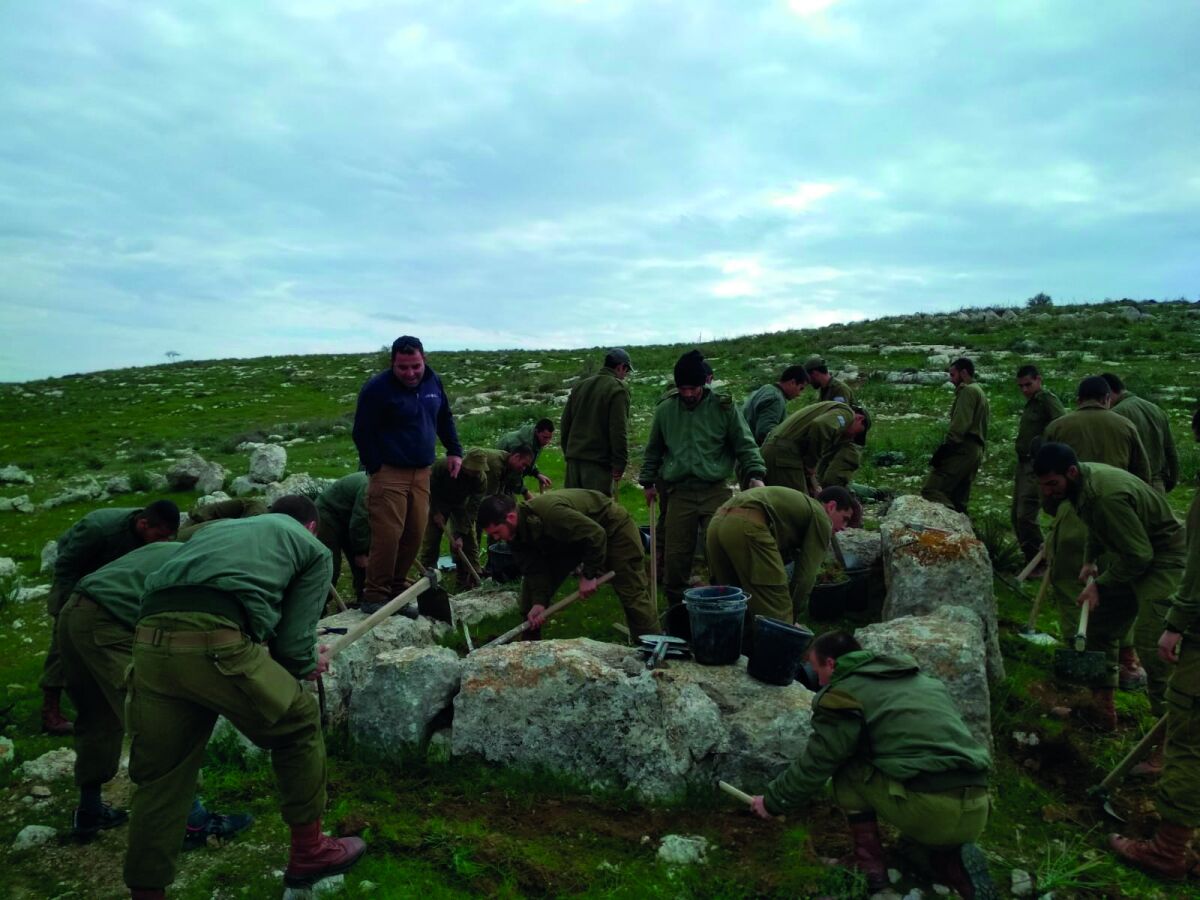
This discovery is almost as significant for sentiment as for science. In a poetic moment, a brigade of Israel Defense Forces paratroopers on an archaeology outreach discovered a 2,700-year-old watchtower used by their ancient brothers-in-arms. The dating sets the tower’s use during the reign of King Hezekiah (a king whose rule as described in the Bible has almost entirely been corroborated by archaeology).
It is theorized that the tower served as a fire-beacon post, of the type referenced in Jeremiah 6:1 and Judges 20. The geographical position of the outpost shows that it was an early warning system against the Philistines. The Bible, as well as Sennacherib’s inscriptions, relates Hezekiah’s military and political successes against the Philistines (2 Kings 18:8).
10. Trail of the Lost Ark?
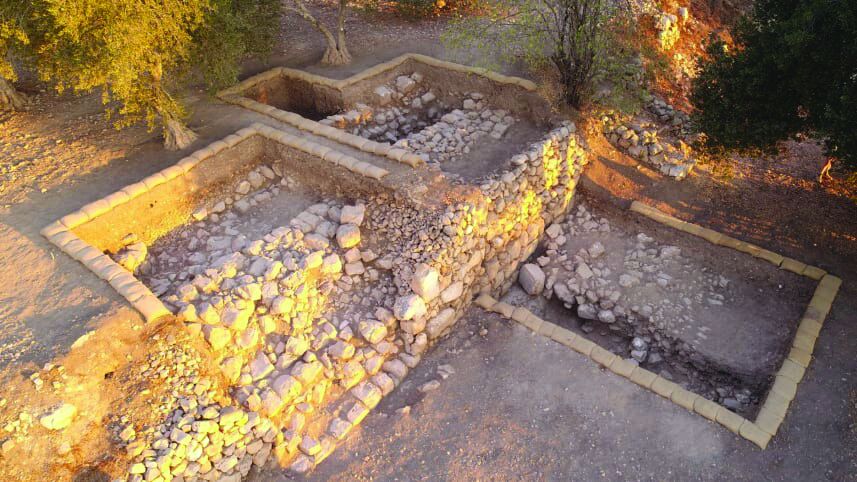
2019 began and ended with discoveries potentially related to the ark of the covenant. Reports broke in January about the discovery of a massive, eighth-century b.c.e. raised platform at Kirjath Jearim. Kirjath Jearim is well known in the biblical account as the city that housed the ark of the covenant for two decades, before it was moved to Jerusalem (1 Samuel 7:1-2). Codirector of the excavations, Prof. Israel Finkelstein, identified the peculiar 1.7-hectare platform as a memorial “shrine” to the placement of the ark of the covenant in the city.
In December, excavators at Beth Shemesh revealed a massive ritual stone table in a room of worship, dating to around 1100 b.c.e. The peculiar table was linked by the directors to 1 Samuel 6, which describes the delivery of the ark of the covenant to Beth Shemesh around this time period. The ark was placed by the inhabitants “on the great stone” (verse 15). The curious citizens took the forbidden step of peering inside the mysterious ark—as a result, a large number of the population were killed.
